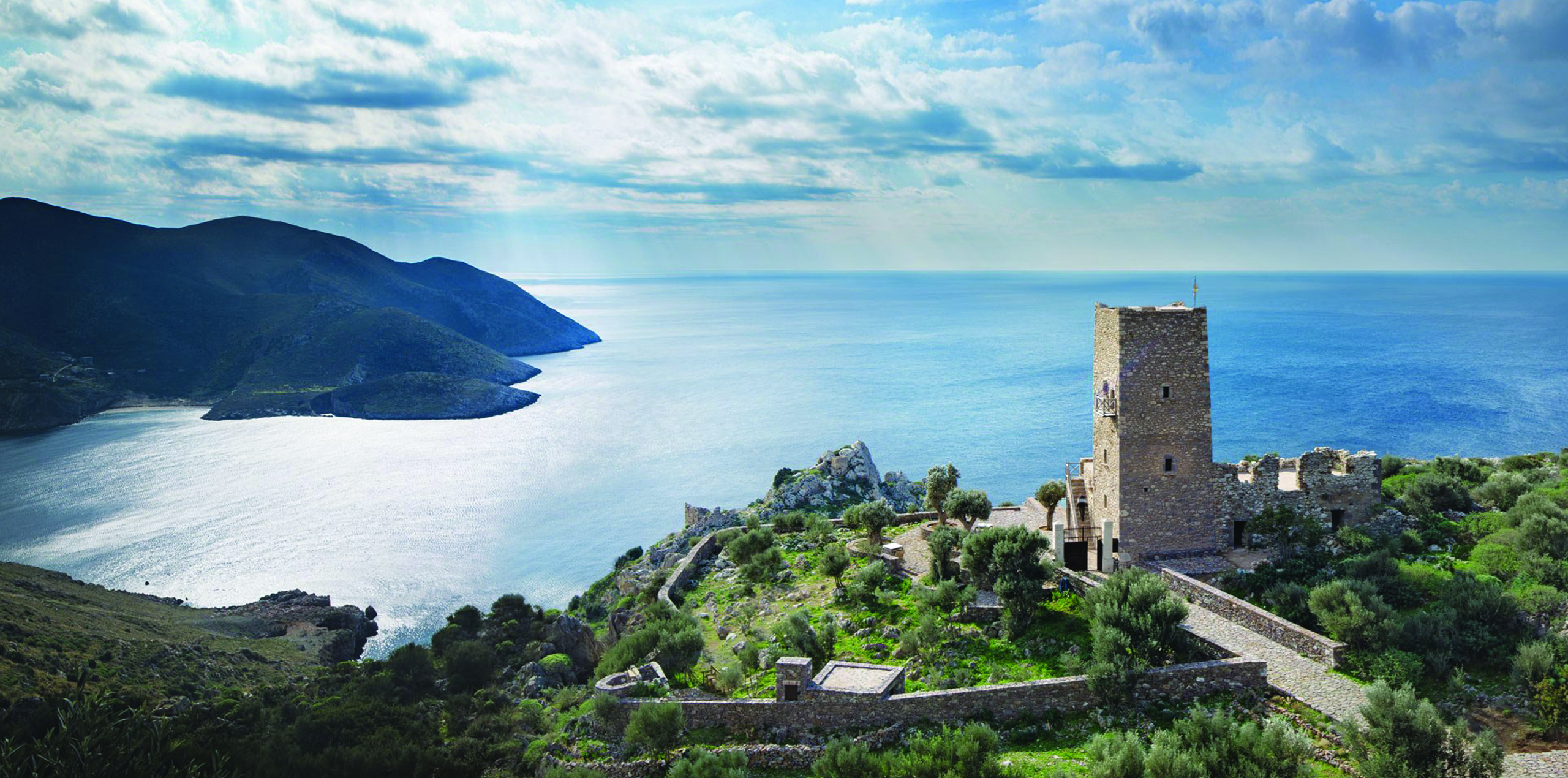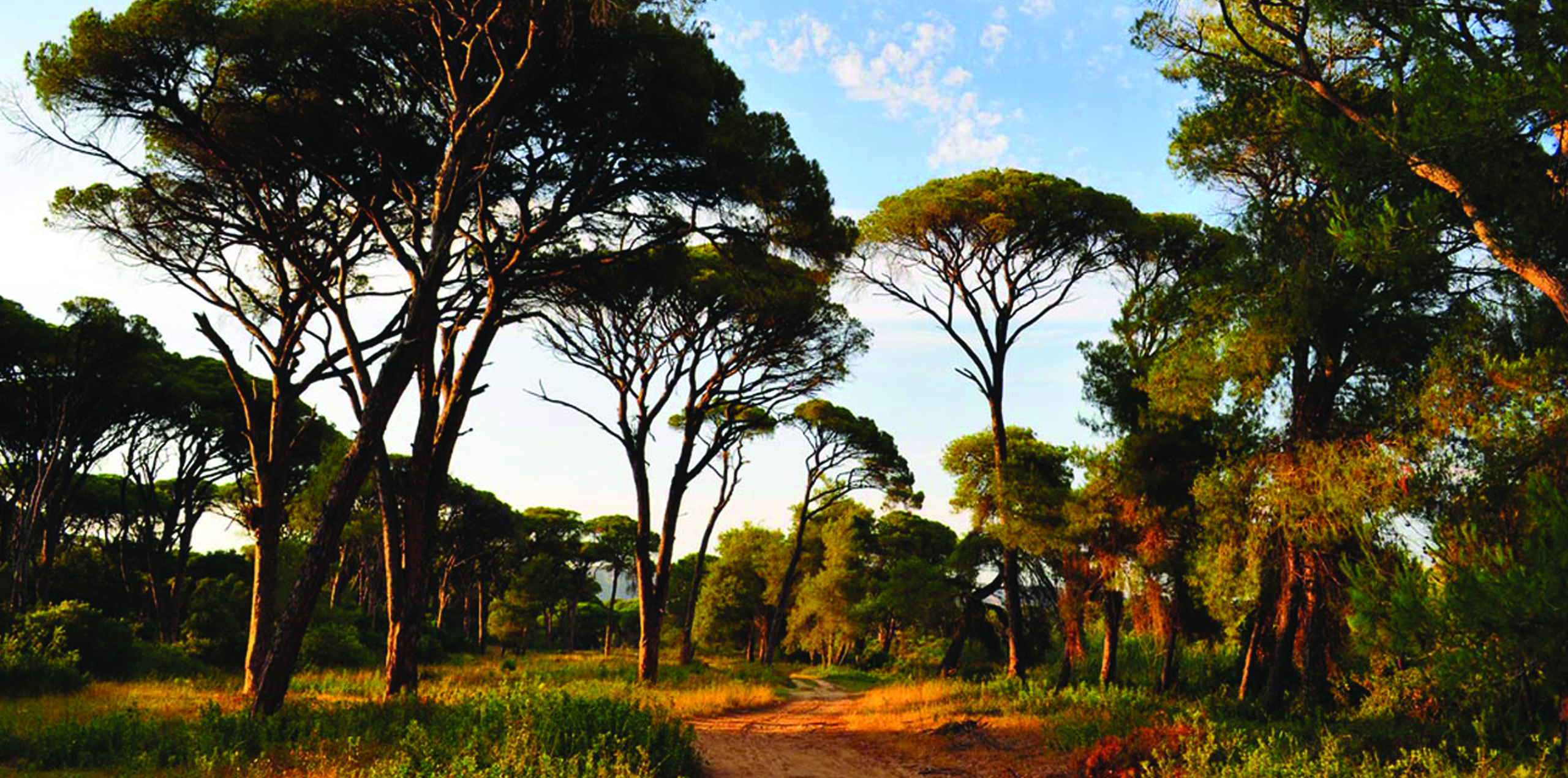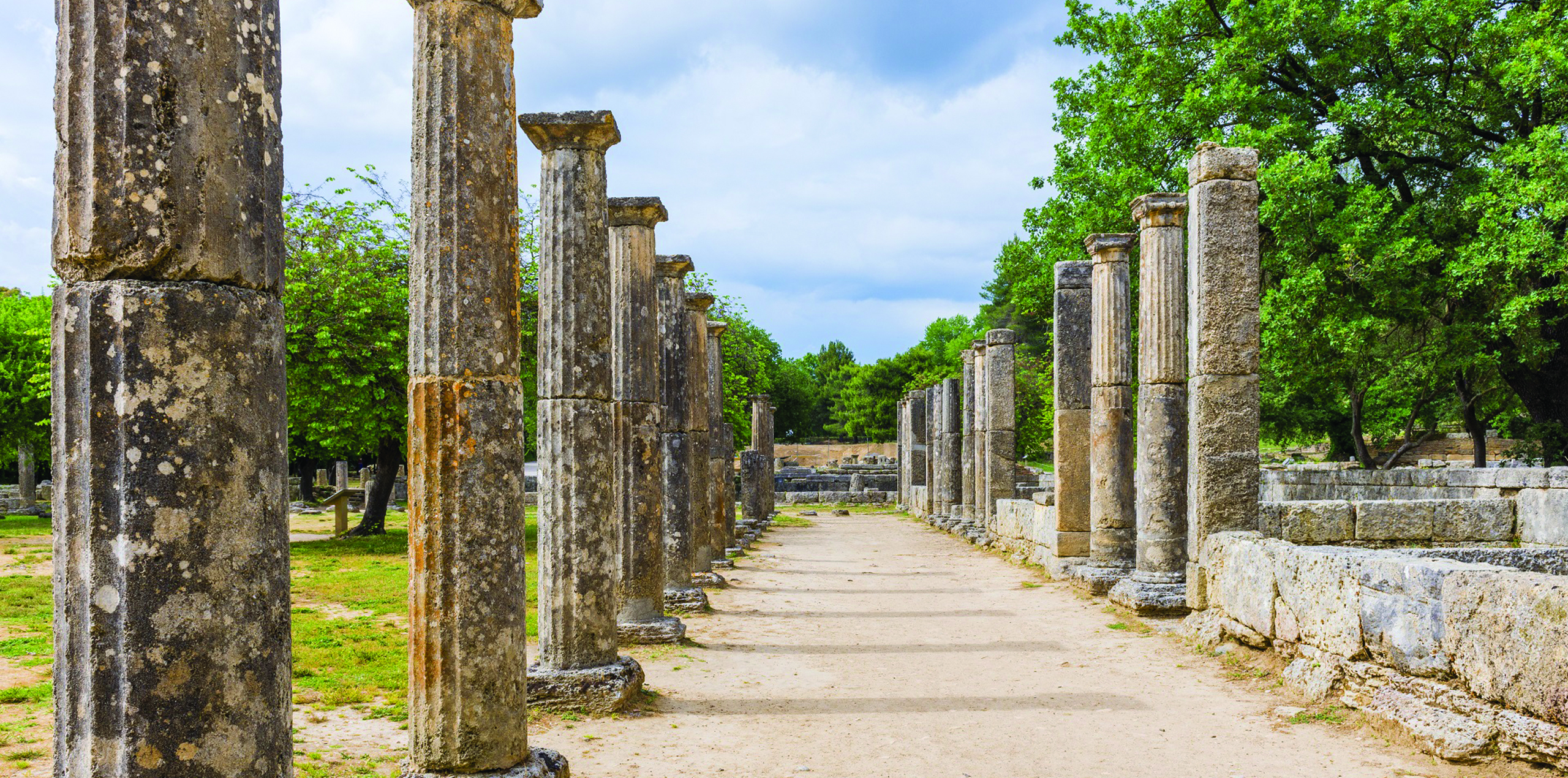Monuments of Greece
Overall distance: 1,346 Kms
Greece is not just islands, sun and beaches, however, and the Greek mainland has a great deal to offer the adventurous tourist – fantastic mountains, great history and archaeology, and the chance to get a feel for and appreciate the “real” Greece.

View from Cape Tainaron, in Mani peninsula, Southern Peloponnese.
Greece offers so much to those of us who prefer to spend our holidays in a campervan, but the distance from Europe often makes it difficult or impossible to spend enough time there. On top of that, there is sometimes the feeling that to go to Greece and not visit the Greek Islands is not to get the best from a trip. Greece is not just islands, sun and beaches, however, and the Greek mainland has a great deal to offer the adventurous tourist – fantastic mountains, great history and archaeology, and the chance to get a feel for and appreciate the “real” Greece.
One attractive option is to fly to Athens and hire your van, saving all that transit time and expense, so that you can enjoy what Greece has to offer. Greece is geographically quite a compact country, the distances aren’t too great, and there’s something of interest round every corner. As an example of just how much can be seen in a relatively short time, the following itinerary suggests a trip from Athens to the Peloponnese and across to the mainland north of the Gulf of Corinth, taking in some of the most dramatic archaeological sites along with the best of the scenery. (Camper Club will meet you at Athens Airport and take you to pick up the van at their nearby service centre. This is situated right next to the new Athens highway, so you can be on the way to Epidaurus straight away).
If you wish, at the point where the tolls starts, you can take the old coast road to Epidauros instead of taking the motorway, perhaps because you will wish to cook something interesting that night, such as spaghetti with mussels. Don’t forget that anything is possible in a campervan! At Neraki in Loutropyrgou you can buy fresh mussels as well as various types of clams. To get there go on to the Motorway at Kinetta and get off at the Epidaurus exit a little after Loutraki. Then you can go to the Corinth Canal, which is an amazing sight, a huge trench cut through the naked rock. Take time to see it from above, then drop down to Isthmia to watch the modern bridge submerge to allow ships into the canal. The road to New Epidaurus is quite good with great views but lots of bends. If you prefer an organised camp site, then there are two to choose from in New Epidaurus, both near the main road but on the sea: New Epidaurus and Diamandis. Both sites offer facilities such as an electrical hook-up, toilets, water, showers, a restaurant and mini market as well as a swimming pool.
Palio (Old) Epidaurus is only seven kilometers away from here and you will soon find yourself immersed in Ancient Greek culture as the Ancient Theatre of Epidaurus is only 14 kilometers away. A beautiful 300 meter path winds its way through ancient olive groves to the Ancient Theatre. In ancient times, Epidaurus was an important centre in the area called Argolidas, well-known for its beauty and harbour which allowed quick communication with the people of Corinth, Athens, and Aegina as well as the wider area of the Aegean. Some covered tombs three kilometers above the village show traces of the civilisation of Mycenean times. The importance of Epidaurus can be seen from the fact that its ancient Asklypion (ancient centre for cures) was reproduced throughout the East and in Rome. There are four campsites in the area: Nicolas I, Nicolas II, Verdelis Beach at Gialasi beach, Bekas at Gialasia beach). All of them operate from April to October. The atmosphere in Palio Epidaurus is very cosmopolitan, with lots of cafes and restaurants and shops selling every type of food and cooking ingredients for those who love trying local foods and cooking. In whichever campervan you rent there is all the cooking equipment you might need. Of course, you shouldn’t miss visiting the actual site of the Ancient Theatre. You can also sample the local meat and cheese in the tavernas at Lygourion. Throughout your journey, you shouldn’t have a shortage of water as there are roadside water sources around but also you can fill up with water in any garage.
On leaving Epidaurus you can cross the Peloponnese from East to West to arrive at Ancient Olympia, and you can enjoy the beautiful beaches of Kouroutas and Kalogrias. You can take the road through Nafplion and Milos (don’t forget to buy local bread, olives and home-made Xilopitas – small fresh pasta), then on up the road to Achladokambos – famous for its bends. Next comes Tripolis, Megalopolis, Karitaina and Andritsena – watch the beautiful but narrow roads around here. From this point it’s worth making a small detour of 13 Kms to visit the striking Temple of Apollon Epikourion at Vassae. This temple is one of the most important and striking for its size from ancient times. It was dedicated by the Phygalians to Apollon because they came through an epidemic of the plague. The temple is sited at a height of 1,130metres and was built in the second half of the 5th Century BC. It was designed by Iktinos, who also built the Parthenon. This wonderful monument of classical architecture, with its worldwide appeal, was designated a World Heritage Site by UNESCO in 1986. Parts of decorations of the temple were taken in 1814 and are to be found in the British Museum. At that time taking certain archaeological pieces was a way of filling museums and the excuse used was that it was a way of preserving such remains, as was the case with the Parthenon marbles.

Elafonissos, famous for it’s magnificent beaches with turquoise water and tropical white sand.
The natural west coast of the Peloponnese at ancient Olympia is full of history. The oldest traces of civilisations in this area are from the 3rd Century BC. In the 9th Century BC, Olympia was already a sacred site. The huge numbers of worshipers came from all over the Ancient world. Around the 5th Century BC, Olympia’s reputation extended from the East and Mesopotamia to the West and Southern Italy. One of the most important points in Olympia’s history was in 776BC when, according to tradition, the Spartan Lygourgos negotiated a deal with King Ilidos Ifitou to carry out a thanksgiving event in Olympia. Part of the agreement stated that during this event there would be peace throughout Greece. In the 5th Century BC, Olympia’s fame was so great that all the great politicians, philosophers and artists of that period could be found there practising their arts. In the 4th Century BC, a great effort was made to improve the facilities and build shelter for all the visitors and worshippers. In 393BC, the Roman Emperor Theodosios I ordered that all the Greek Temples and sacred sites be closed without specifying which sites he meant. Despite that, Olympia remained very popular even when it was damaged by natural disasters. Around the 9th Century AD the site was abandoned. As time passed the waters from winter rains moved the ground and the Kronos Hill became covered over. It was rediscovered in 1766 by Richard Chandler.
On your visit to Olympia you can use one of the three campsites in the vicinity: The Alpheos (the only one which operates from May to the end of September), Diana and Olympia. Before leaving the Peloponnese, I suggest you enjoy the beaches between Pyrgos and Kyllini. To make it easier I’d recommend the beaches of Kouroutas and Kalogrias, which are worth the trip. There are four camp sites in the vicinity of Kouroutsos: Camping Kouroutsos, The Municipal Camp Site, The Paloukiand Camping Paradise.
Crossing from the Peloponnese to Mainland Greece can be done either over the new Rio- Antirrion bridge or with the small ferry boats which are slower but cheaper for a campervan and 2 people. Your next stop should be at historical Nafpaktos – 11 Kms from Antirrion. In 1571 Nafpaktos became famous for one of the most important battles in Naval history when the Ottoman Empire’s fleet was destroyed by allied European powers, cutting off the threat to Europe. Have a drink in the picturesque harbour and walk to the nearby castle above Nafpaktos to enjoy the views over the town of the blue seas.
On the way to Delphi, it’s worth stopping even for a short while at Galaxidi, which has a long naval history. There is no camp site in Galaxidi, however, you can eat well in the tavernas famous for fresh fish and shellfish as well as various spit roasted meats. In addition, there are fabulous olives from Amfissa and goat yoghurt to be sampled. Other local produce includes organic oil, wines, fruit jams, honey, village toasted bread and last but not least Tsipouro – almost neat alcohol! In addition Galaxidi is famous for two cakes: Amygdalou and Revani. Delphi was an ancient Greek town famous for the most important oracle in the world. The town was known in Homeric times as Python. The town of Delphi was known as the Navel of the World and for centuries was the spiritual centre for those seeking advice in ancient times. At the beginning it was simply one of the towns in Ancient Fokidas but slowly its reputation grew until it became the most sacred Greek centre in the ancient world. Delphi kept its importance until the end of the 4th Century BC when Emperor Theodosios I gave orders for it to stop being a place of oracles. In the following centuries the town slowly declined and was finally abandoned in the Slavic migration. You really must visit the ancient site of Delphi and the museum (9Euros per person), which contains the famous statue of Iniochos. Should you wish to overnight at Delphi, there are two campsites on this road.

In the western Peloponnese, lies the most celebrated sanctuary of ancient Greece, Ancient Olympia.
It would be a shame to return to Athens without taking in the magic image of the six monasteries clinging to the cliffs at Meteora, near Kalambaka. It’s only 217 Kms to Meteora on the road through Amfissa, Lamia, Karditsa and Trikala. The part from Lamia to Domokos is winding and mountainous but from there on in to Kalambaka it is a quick run without tolls. There are many campsites at Meteora, all around the town of Kalambaka. However, the one I would recommend is the Arsenis campsite, a friendly site is at the base of the mountains and within sight of Aghias Triados Monastery.
